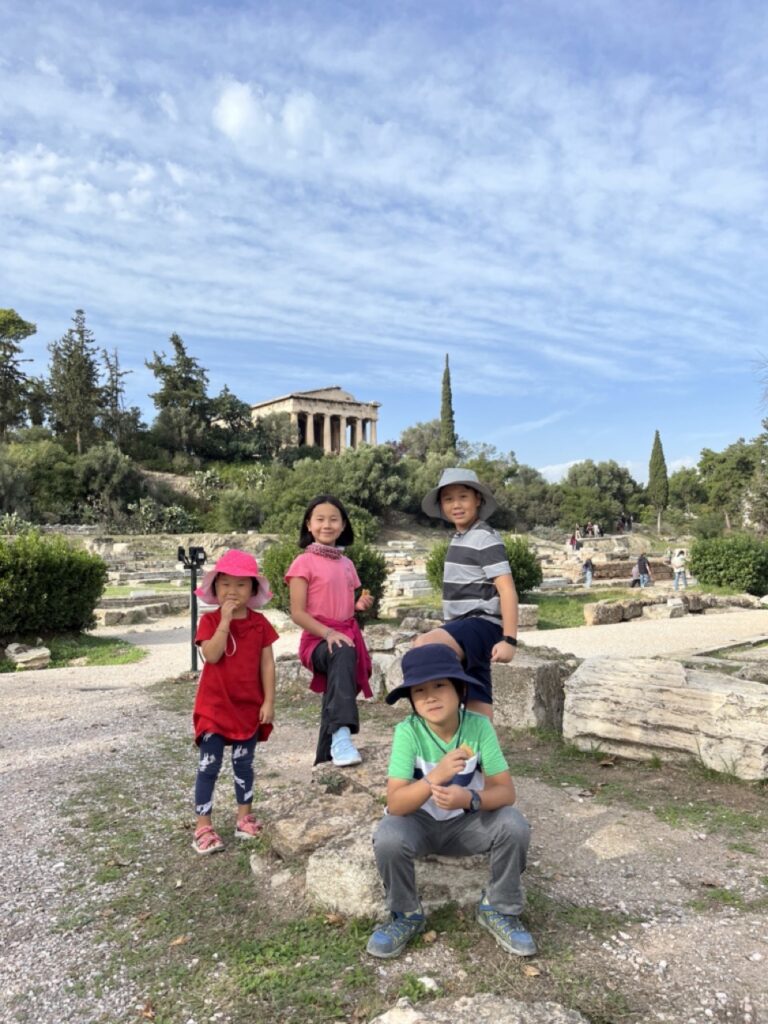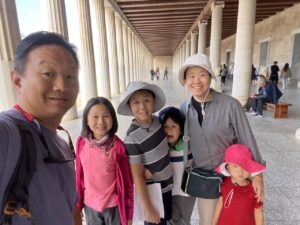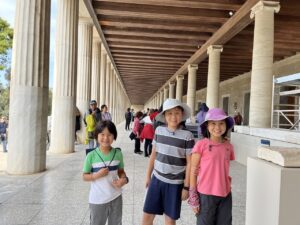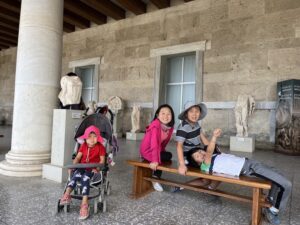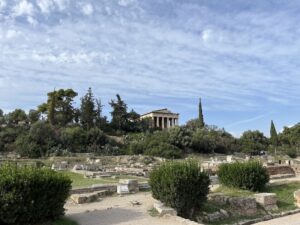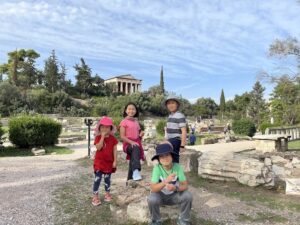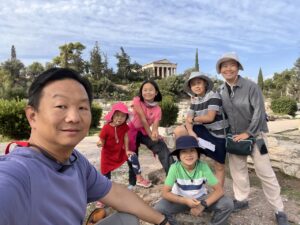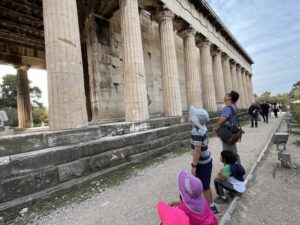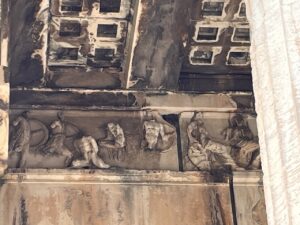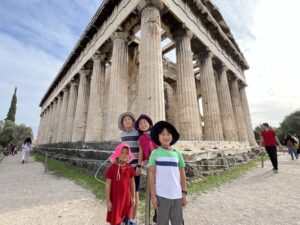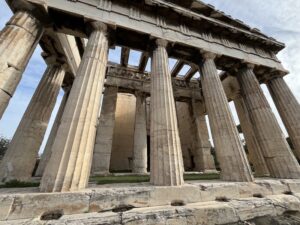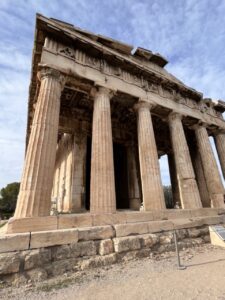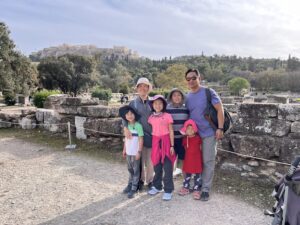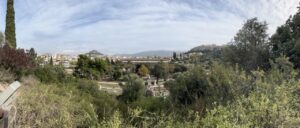The Ancient Agora is the ancient heart of Athens. When you picture in your mind one of the great Greek philosophers like Socrates, Plato or Aristotle strolling or sitting around a peaceful garden surrounded by pupils, you probably didn’t think too much about where they were. The setting was more likely than not somewhere in the Ancient Agora.
Agora means “an open place for assembly”. Back in ancient times, starting from the 6th century BC, the agora was a place for Athenians to gather and deliberate, interact, conduct business and run errands. It was the center of life in Athens in almost every respect including political, cultural, commercial, social, religious and administrative spheres. The agora has been destroyed and rebuilt numerous times over the ages and modified to suit the needs of the day. By the time of Pericles’ rebuilding program of the Acropolis, it was flourishing as a city center.
Instead of hiring a tour guide, RY volunteered to give us some background information and guide us around.
It was not for lack of trying but without a guide, it is difficult to make sense of the paths and ruins that make up most of the agora today. We focused our time on two prominent structures on the grounds. The Stoa of Attalos was built in the middle of the 2nd century BC and named after King Attalus II of Pergamon, who had it constructed as a gift to the city of Athens. The stoa is an impressive structure that unlike the ruins of the rest of the agora, looks to be in immaculate condition. What we see today is a reconstruction from its foundations, completed in the 1950s, using materials found in the agora.
Originally, the two-story building was designed to be what can best be described as a shopping center and contained 21 shops. Today, it is the Ancient Agora Museum that houses objects from different periods of antiquity that were discovered during excavations of the Ancient Agora.
We examined the Doric and Ionic columns in the Stoa and learned how to differentiate between the two. Doric columns can be simply described as more masculine which means, sturdier, simpler and more straightforward. Ionic columns can be simply described as more feminine with a more delicate shape and more decorative features at the top. There are 45 Doric columns on the façade of the exterior and 22 Ionic columns on the façade at the interior
We looked through the museum that contained clay miniatures, bronze objects, sculptures and pottery.
A few steps outside of the stoa, there was hardly anybody else around. We could take our time to enjoy the views and stroll through the birthplace of democracy. In Ancient Greece, adult citizens had a civic duty to participate in government with real consequences like a fine or public shaming if they skirted this responsibility. Athenian citizens were all given the right to vote on proposed laws, though the definition of “citizen” was limited to adult males and did not include women, slaves or children
From the grounds of the agora, we drank in views of the most famous structure in the Ancient Agora, the Temple of Hephaestus. RY and DY had a lot to tell us about Hephaestus.
Hephaestus is the Olympian god of fire, blacksmithing and metal working. He was incredibly ugly, which made his mother unable to love him. In a fit of rage, Zeus threw his son off of Mount Olympus which tragically resulted in injuries that made him even uglier. His marriage to Aphrodite was ill-fated because she never loved him and carried on an affair with Ares, the god of war. He was skilled at his craft of forging weapons for the other gods but he never had much happiness in life.
The Temple of Hephaestus, built around the same time as the Parthenon, is among the best-preserved ancient temples in Greece. The reason for its well-preserved condition is because of its conversion to a church during the Middle Ages.
Despite its name, it was dedicated to Hephaestus and to Athena, the goddess of wisdom, strategic warfare and crafts as well as the patron of the city of Athens. Since the Middle Ages, the temple was known as the Theseum because some of its sculptures depict the adventures of Theseus, like slaying the Minotaur.
We followed the other visitors up the stairs that lead to the temple.
We examined the columns (Doric) and I relied on the kids to decipher the friezes with depictions of the 12 labors of Heracles and the exploits of Theseus. To their credit, they spotted a frieze with scenes from the Trojan War.
From the temple, we could see the entire Ancient Agora including the Stoa of Attalos. Modern buildings surrounded the green space created by agora to remind us of where we were. Just beyond, we could see the Parthenon watching over all of Athens.
Author
-

Song is the mother of four children. She and her family have stepped away from it all and in September 2023, began traveling the world while homeschooling. Song is an ABC (American born Chinese) and has an undergraduate degree from Cornell and an MBA from Harvard. She is an entrepreneur and an educator. Her hobbies include learning, traveling, reading, cooking and baking, and being with children.

